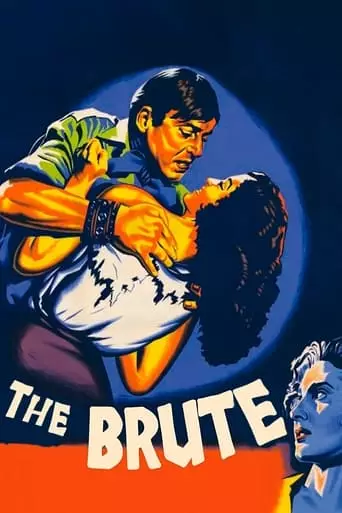
El bruto (1953) Watch Online Free
A tough young man, who helps to kick poor people out of their houses, falls in love with a girl. She lives with her father in the building about to be demolished.
The Brute (1953), directed by Luis Buñuel, is a dark, noir-infused melodrama set against the grim backdrop of post-revolutionary Mexico. The film is an intense exploration of power, violence, and human relationships, marked by Buñuel’s trademark sharp social commentary.
The story revolves around Pedro (Pedro Armendáriz), a brute force employed to evict tenants from an old building owned by a wealthy but cruel landlord, Andrés Cabrera (Andrés Soler). Cabrera hires Pedro to intimidate the tenants, whose resistance to eviction becomes a matter of life and death. The film starts with Pedro accidentally killing a tenant, Carmelo, and quickly spirals into more bloodshed as the tenants’ resistance intensifies.
As the violence mounts, Pedro’s character begins to evolve. His ruthless, crude exterior begins to show vulnerability, especially when he seeks shelter with a compassionate woman named Meche (Rosita Arenas). Their budding romance juxtaposes with Pedro’s past actions, leading to a violent confrontation that challenges both his humanity and the relentless social forces around him.
Violence and Redemption: One of the key themes of The Brute is the conflict between brutality and the possibility of redemption. Pedro is initially portrayed as a violent, almost animalistic character, but his interactions with Meche suggest that even a man defined by violence is capable of change. Buñuel plays with this ambiguity, exploring whether true redemption is possible for someone so deeply entrenched in violence.
Class Struggle: The film reflects Buñuel’s concern with social and economic inequality. Cabrera’s actions as a landowner mirror the exploitation of the working class, with Pedro caught in the middle. His role as a tool of oppression highlights the dehumanizing effects of economic power on both the oppressor and the oppressed. The tenants’ resistance symbolizes the struggle for survival in a corrupt system.
Noir Aesthetics: True to Buñuel’s vision, The Brute embraces a noir atmosphere, characterized by shadowy lighting, stark contrasts, and a sense of hopelessness. The grim urban landscape and the tense, oppressive mood enhance the emotional and psychological weight of the narrative, immersing the viewer in the despair of its characters.
Psychological Complexity: Buñuel also delves into the psychology of his protagonist. Pedro’s journey is not just physical but deeply emotional, as he grapples with guilt, love, and the implications of his violent past. His interactions with Meche are poignant, suggesting that love, even in its simplest form, could be a pathway to personal transformation.
After watching The Brute, you might feel a mixture of shock, reflection, and perhaps a sense of melancholy. The brutal violence that pervades the film might leave you unsettled, especially as it underscores the characters’ struggles within a rigid social structure. At the same time, the film’s exploration of redemption and human frailty offers a glimmer of hope amidst the darkness. You may find yourself contemplating the moral dilemmas presented, questioning the possibility of change for those trapped in cycles of violence and oppression.
Ultimately, Buñuel’s work leaves you questioning the nature of humanity and the impact of societal forces on individual lives, which may linger long after the credits roll
